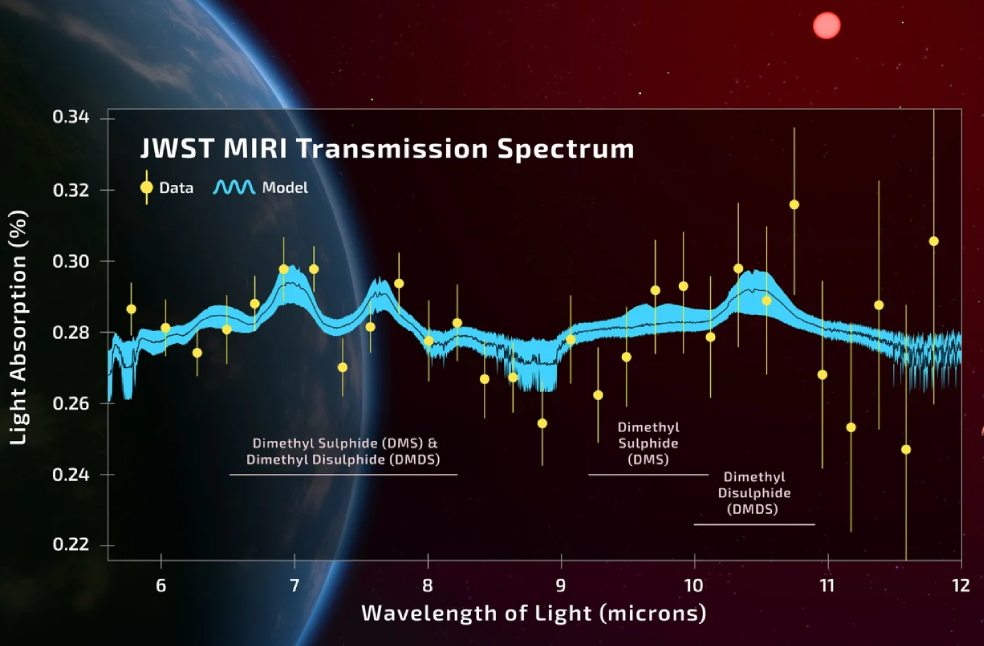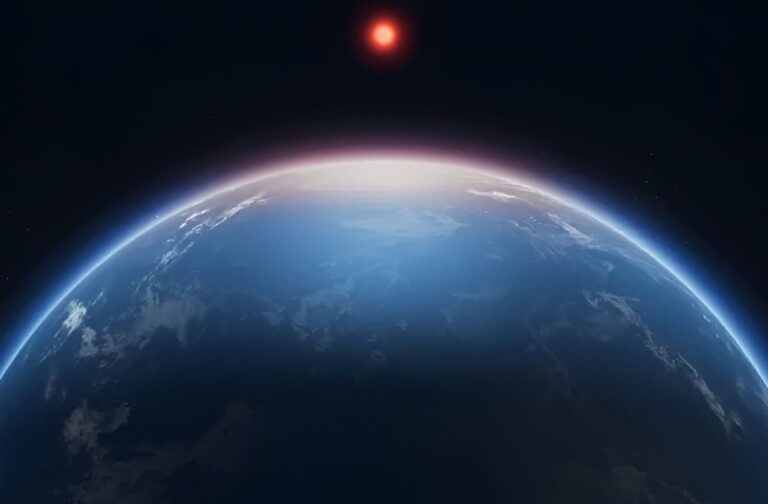United Kingdom: Cambridge scientists have revealed what could be the most compelling evidence yet that life may exist on a distant planet orbiting another star. The team has witnessed potential signs of biological molecules in the atmosphere of K2-18b, a world located 700 trillion miles away.
Using the advanced capabilities of NASA’s James Webb Space Telescope (JWST), researchers found chemical signatures in the planet’s atmosphere that may reveal the presence of dimethyl sulphide (DMS) and dimethyl disulphide (DMDS) molecules that on Earth, are only produced by simple lifeforms like marine plankton and bacteria.
Lead researcher Professor Nikku Madhusudhan from the University of Cambridge’s Institute of Astronomy stated that, “This is the strongest evidence yet that there is possibly life out there. I can realistically say that we can confirm this signal within one to two years.”
K2-18b is more than twice the size of Earth and orbits a small red dwarf star. Despite its distance, JWST is capable of analysing the planet’s atmosphere by observing how starlight passes through it.
The Cambridge team was especially stunned by the estimated quantity of these life-associated gases. Prof. Madhusudhan commented that, “The amount we estimate of this gas in the atmosphere is thousands of times higher than what we have on Earth. If the association with life is real, then this planet will be teeming with life.” Prof. added that if confirmed this discovery could suggest that life is common throughout the galaxy.

However, caution remains high among astronomers. The current detection is at a three sigma confidence level about 99.7 percent which is not enough to meet the gold-standard five sigma (99.99999 percent) required for scientific confirmation.
Even with a five sigma result, uncertainties remain. Prof. Catherine Heymans of Edinburgh University stated that, “Even with that certainty, there is still the question of what is the origin of this gas. Loads of strange things happen in the Universe.”
The Cambridge researchers are cooperating with other groups to test if the molecules could be produced by geological processes or other non-living means. Some scientists argue that K2-18b might not even have a surface, suggesting it could be a mini gas giant. Others believe it may have an ocean, but whether it’s water or molten rock remains unclear.
Despite differing interpretations, the research represents a significant step forward in the search for extraterrestrial life. Prof. Madhusudhan added that, “Decades from now, we may look back at this point in time and recognise it was when the living universe came within reach. This could be the tipping point.”



